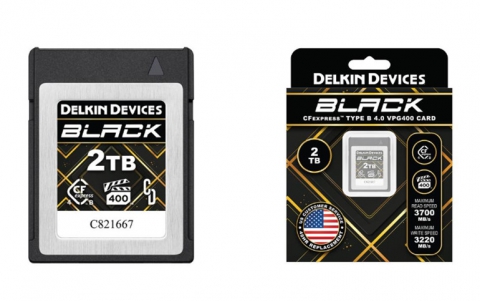
TDK develops super-tough coating for cellphones and discs
A tough, transparent polymer coating developed by TDK chemists in Japan is set to make scratched phone screens and scuffed discs a thing of the past.
The story is available at www.newscientist.com. In a very convincing technology demonstration, the reporter was handed a CD, a wire-wool pan scourer and some permanent marker pens, and invited to scratch or mark the discs. Hard as he tried, he could not make a single mark on the disc with the scourer. And the ink simply wiped off.
The only person to have succeeded in damaging the disc had undertaken a determined attack with a Swiss army knife, according to TDK, the company that has developed the coating.
Two years ago TDK, a maker of tape and disc-based recording media, began developing what was initially a single-layer coating to make DVDs more resistant to scuffing. But the new coating is far tougher, and it is transparent to the full spectrum of visible light rather than just a DVD?s red laser, so it can also be used to protect the plastic surface of colour liquid crystal displays (LCDs).
Two separate layers of fine silica particles prevent scratches, and fluorine-containing resins in each layer repel ink marks. To deposit the first layer of the new coating, a mix of silica microparticles 50 micrometres across and a solution of a fluorine-containing resin are spread on by spin-coating the surface at 8000 rpm.
After they have dried a second layer, made from a mix of another fluorine-containing resin and a curing agent called acetophenone, is spread on top and cured by shining ultraviolet light onto it. Quite how the two layers work together has not been revealed, as TDK is reluctant to reveal any more detail than its newly filed patents contain.
The tough silica particles resist abrasion. Meanwhile, the fluorine-rich resins do not absorb water, so the ink forms droplets that can be wiped off. On a CD or DVD, any residual droplets are much smaller than the laser spot used to read the disc, and so cause no data loss during playback.
The new coating has also provided a boost to the upcoming high-capacity Blu-ray recording discs that Sony, Philips and Panasonic plan to launch next year as a successor to DVDs. The coating will do away with the need for any awkward cassette-style ?caddy? mechanism to protect the discs.
The consortium is pleased because no consumer optical disc that uses a caddy has ever been a commercial success. For instance, the computer industry quickly stopped using caddies for CD-ROMs in the 1990s, and Commodore?s CDTV games system ? launched in 1991 ? was a complete flop.
TDK is not alone in developing a tough coating for hand-held gadgets. The Japanese-European joint cellphone venture Sony Ericsson this month launches its P910 internet-capable smartphone. The gadget sports an ultra-hard scratch-resistant screen that uses a hardening technology it developed in-house. However, unlike TDK, Sony Ericsson is not planning to reveal any details on the recipe for its coating.
For additional information visit www.newscientist.com.
The only person to have succeeded in damaging the disc had undertaken a determined attack with a Swiss army knife, according to TDK, the company that has developed the coating.
Two years ago TDK, a maker of tape and disc-based recording media, began developing what was initially a single-layer coating to make DVDs more resistant to scuffing. But the new coating is far tougher, and it is transparent to the full spectrum of visible light rather than just a DVD?s red laser, so it can also be used to protect the plastic surface of colour liquid crystal displays (LCDs).
Two separate layers of fine silica particles prevent scratches, and fluorine-containing resins in each layer repel ink marks. To deposit the first layer of the new coating, a mix of silica microparticles 50 micrometres across and a solution of a fluorine-containing resin are spread on by spin-coating the surface at 8000 rpm.
After they have dried a second layer, made from a mix of another fluorine-containing resin and a curing agent called acetophenone, is spread on top and cured by shining ultraviolet light onto it. Quite how the two layers work together has not been revealed, as TDK is reluctant to reveal any more detail than its newly filed patents contain.
The tough silica particles resist abrasion. Meanwhile, the fluorine-rich resins do not absorb water, so the ink forms droplets that can be wiped off. On a CD or DVD, any residual droplets are much smaller than the laser spot used to read the disc, and so cause no data loss during playback.
The new coating has also provided a boost to the upcoming high-capacity Blu-ray recording discs that Sony, Philips and Panasonic plan to launch next year as a successor to DVDs. The coating will do away with the need for any awkward cassette-style ?caddy? mechanism to protect the discs.
The consortium is pleased because no consumer optical disc that uses a caddy has ever been a commercial success. For instance, the computer industry quickly stopped using caddies for CD-ROMs in the 1990s, and Commodore?s CDTV games system ? launched in 1991 ? was a complete flop.
TDK is not alone in developing a tough coating for hand-held gadgets. The Japanese-European joint cellphone venture Sony Ericsson this month launches its P910 internet-capable smartphone. The gadget sports an ultra-hard scratch-resistant screen that uses a hardening technology it developed in-house. However, unlike TDK, Sony Ericsson is not planning to reveal any details on the recipe for its coating.
For additional information visit www.newscientist.com.




















